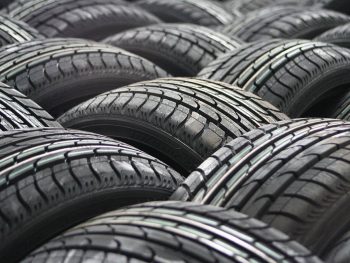Increased pressure on service, maintenance and repair (SMR) budgets will be a hallmark of 2025, requiring fleets to tighten their belts.
 Inflationary pressures are driving up the cost of labour, parts and materials, making SMR more expensive, and further challenges loom large, according to ATS Euromaster.
Inflationary pressures are driving up the cost of labour, parts and materials, making SMR more expensive, and further challenges loom large, according to ATS Euromaster.
Mark Holland, operations director, said fleets are already squeezing maintenance programmes.
He explained: “Across the market fleets are not spending on SMR to the same level. Everyone seems to be tightening their belts, with brakes given lower change rates, for example.”
But he warned of the safety ramifications from SMR cutbacks.
“Brakes are as important as the contact points on the road but the visibility of such safety items – unlike worn tyres – is not immediately obvious. So, then it comes down to timing and how fleet managers can ensure drivers in their vehicles are safe. If you’re running a tighter SMR schedule, how do you know everything is safe? It’s a significant question for fleet managers.”
ATS Euromaster added that some fleets are also ‘de-tiering’ tyre brand policy, providing another sign that SMR budgets are being squeezed for 2025.
But Holland warned that budget tyres will help ease pressures on SMR budgets in the short term but may not provide the same level of in-life longevity and require changing more often.
“Again, we would urge fleet managers to ensure they have a firm grip on their fleet’s general maintenance if tyres are being run for longer or budget tyres are on the agenda, then make sure they are appropriate,” he added. “Sacrificing safety for a reduced SMR spend is a no-go zone.”
A proactive approach to fleet inspections and management can also minimise costly repairs and vehicle offroad time. And ATS Euromaster says being flexible and adaptable in budgeting processes means fleets can increase their ability to account for unexpected cost increases and the prospect of SMR inflation.
Advice includes working with SMR providers much closer to satisfy demands and ensure fleets can secure the slots for maintenance work as required. Telematics and data analytics can also prove beneficial to predict potential failures and schedule maintenance proactively, reducing downtime and unexpected costs – particularly where SMR items are being pushed to the limit.
Finally, the firm warns that geopolitical tensions and lingering supply chain issues may well have an impact on economic performance across the globe.
Houthi rebel attacks on ships disrupted trade in 2024 and further destabilisation in the Middle East could lead to significant supply issues as ships travel further to avoid the Suez Canal.
And while the semiconductor shortages are improving, they have not gone away completely: some industry analysts predict these could persist in certain sectors into 2025 and beyond. Automotive chips, especially those for advanced features, might still be constrained.
“The likelihood is that we may see a continuation of extended vehicle lifecycles,” said Holland. “Some fleets are already comfortable with this, but for other fleets it means a requirement for more maintenance needs. Modern vehicles are increasingly complex, with more electronics and sophisticated components. Maintaining older vehicles with these technologies can be challenging.”
Advice to prepare for the challenges of 2025
- Be proactive! Inspect your fleet regularly, maintenance is less costly than a VOR and repair work.
- Plan ahead for SMR requirements; consider potential disruptions and cost increases and have a contingency strategy.
- Embrace technology! Ignore new tech at your peril. Utilising technology, such as telematics and AI can help your organisation optimise SMR and reduce costs.
- Let training decrease the strain! Investing in driver training will ensure drivers put less strain on the vehicles, be involved in fewer collisions and reduce SMR spend.
- Budget isn’t always best! Think whole-life cost rather than cheapest on the day – analyse spend against longevity to ensure SMR budget is being spent wisely.

